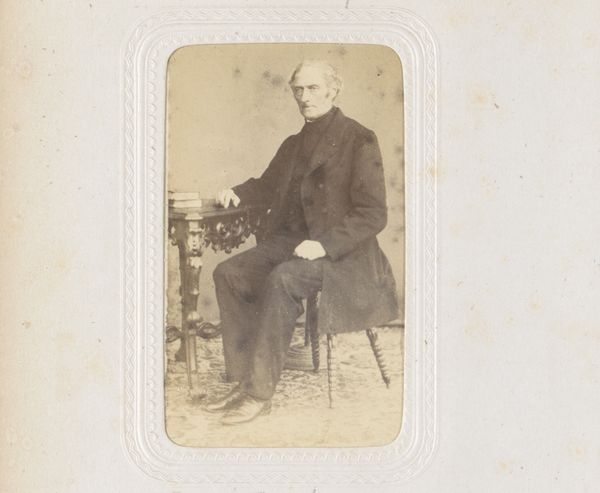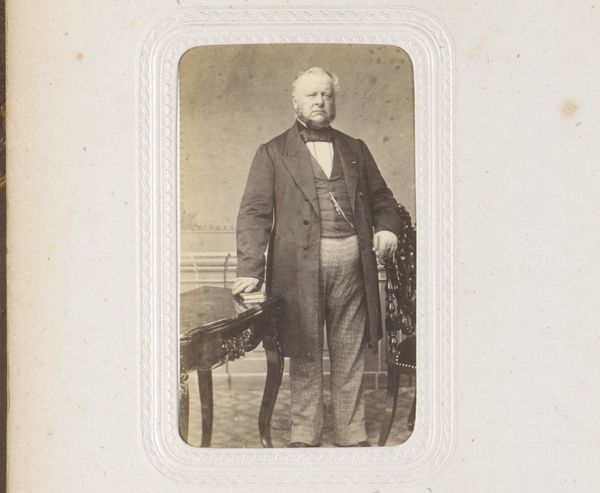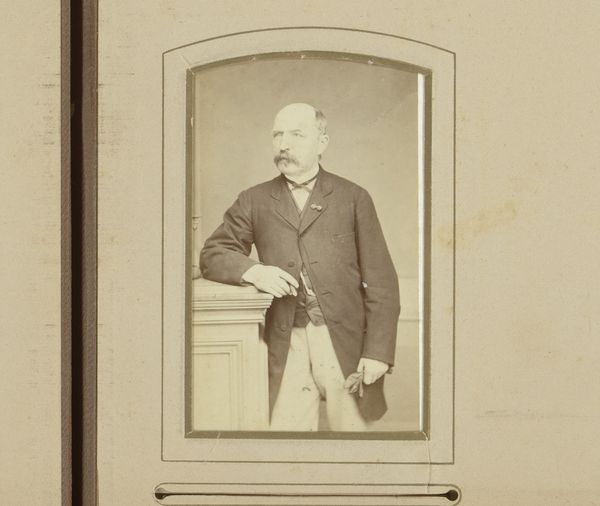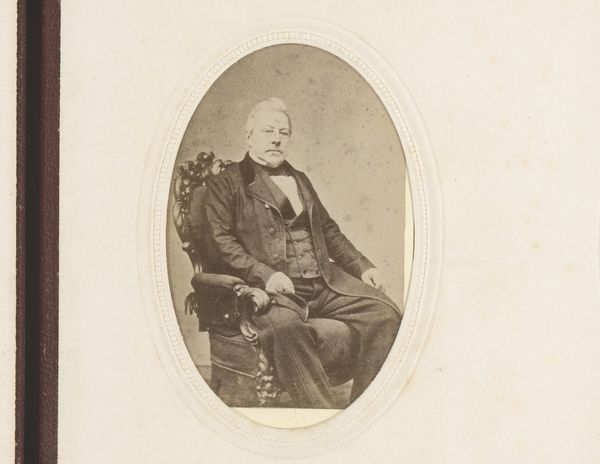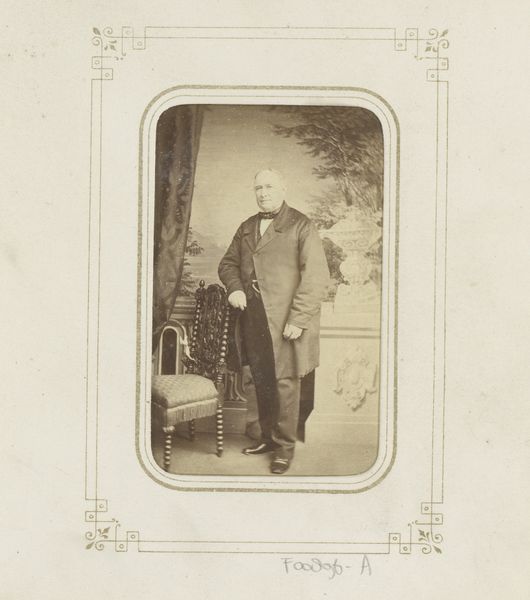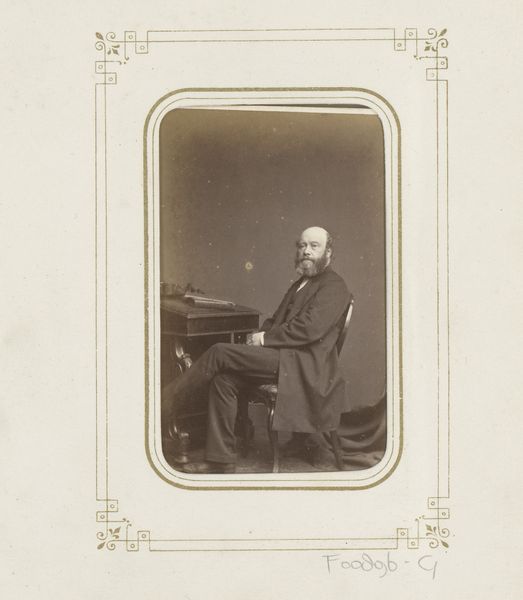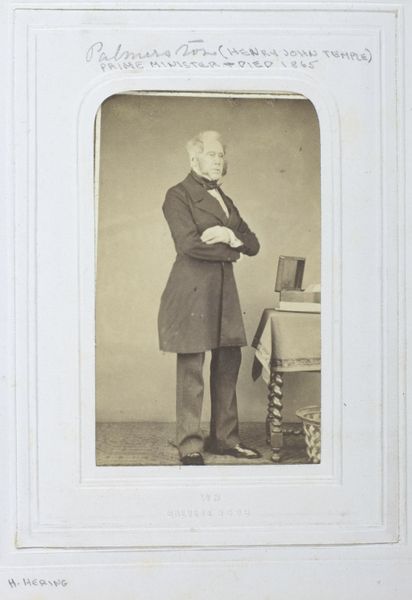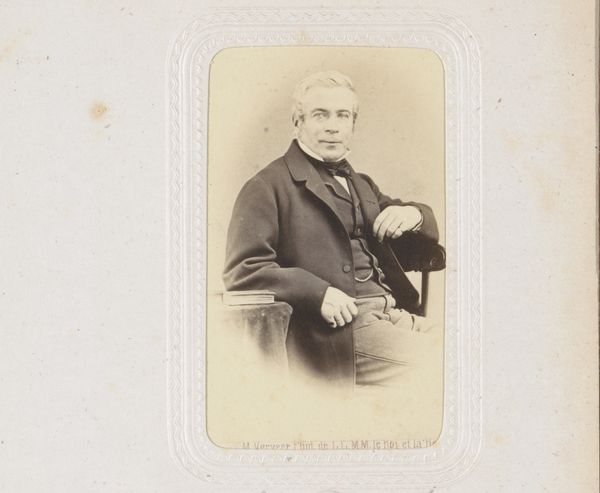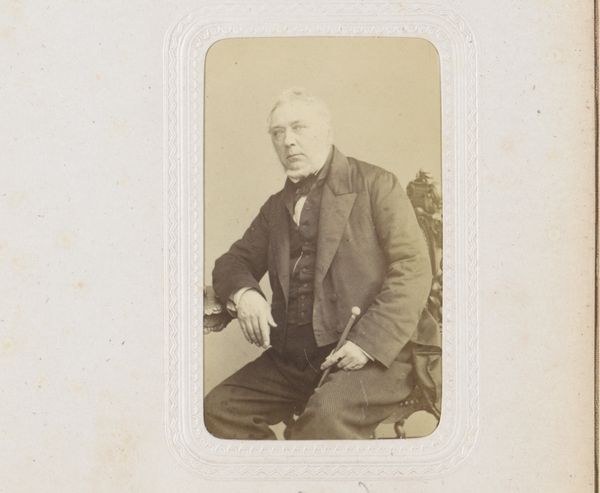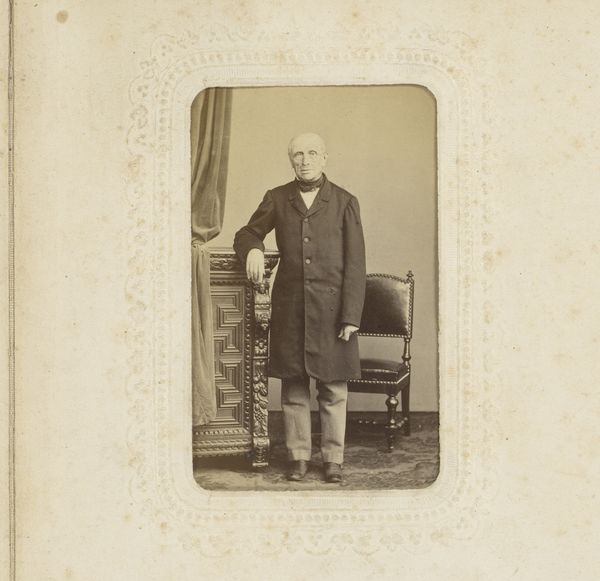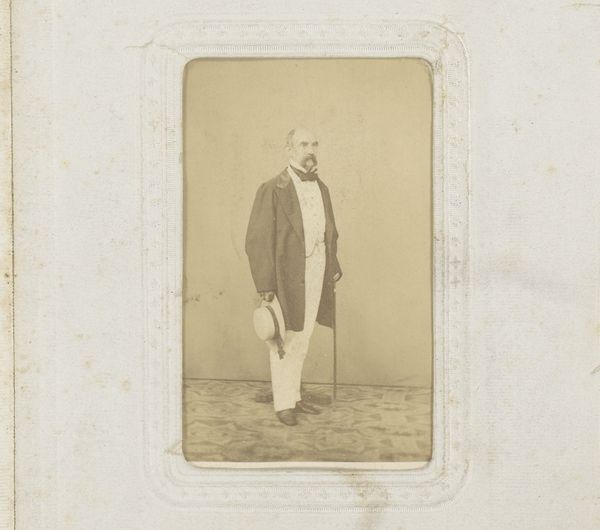
Portret van een zittende man, aangeduid als J.A. Philipse 1850 - 1889
0:00
0:00
Dimensions: height 82 mm, width 50 mm
Copyright: Rijks Museum: Open Domain
André-Adolphe-Eugène Disdéri created this photograph of a seated man, thought to be J.A. Philipse, using the carte de visite format. This format gained popularity in the mid-19th century, a period marked by significant shifts in social identity and representation. During this time, photography democratized portraiture, extending it beyond the elite. Disdéri was at the forefront of this movement. His work captures the burgeoning middle class, eager to participate in visual culture. This photograph reflects the sitter's attempt to embody respectability and social standing through dress and pose. The subject, likely a member of the upwardly mobile bourgeoisie, presents himself in a manner that speaks to the era’s ideals of success and dignity. However, the photograph also hints at the constructed nature of identity. The carte de visite became a tool for crafting a desired image. This invites us to consider the performative aspects of identity and representation in the 19th century. It also encourages reflection on how photography has shaped our understanding of self and society.
Comments
No comments
Be the first to comment and join the conversation on the ultimate creative platform.
